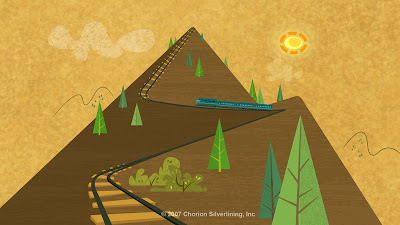
Live action reference for Tinker Bell in Peter Pan

Reference for Lady and the Tramp

Reference for 101 Dalmatians
Brad Bird has added to the debate over Mocap, Rotoscope and Traditional animation. I tried to define the differences between Roto and live action reference in an earlier posting called Rotoscope VS Reference but Brad says it much more clearly.
_____________ Click on images to enlarge
Brad says:
Hmn. Gotta say I disagree with a few of you folks. I consider mo-cap and rotoscope very similar in a few important respects; both have a performance foundation that begins with someone other than the animator, and the ultimate success of each is dependent on how skillfully they are altered from that foundation.
The best characters to begin with a mo-cap foundation (Gollum and Kong–both courtesy of Peter Jackson & co.) were re-worked extensively by animators (some of Gollums best scenes were entirely keyframed– the Andy Serkis reference studied and interpreted by eye rather than by computer).
This is true of rotoscope as well. When great animators extensively rework the live action base you get Cruella DeVil, Captain Hook, Smee, Chernabog from Night On Bald Mountain, etc…
But when an animator simply accepts the live action perfomance without strengthening the poses or finessing the timing and lazily traces a hand over a hand, a shoulder over a shoulder, you get the watery, dull, unconvincing Prince in “Snow White”, Gulliver in “Gullivers Travels”, Anastasia in “Anastasia”, and EVERYBODY in Bakshi’s “Lord of the Rings”, “American Pop”, “Fire & Ice”, etc.
I would argue that talented animators did some fantastic reworking of Andy Serkis’ very fine initial interpretation of Gollum. Like most animation, not all scenes are created equal, but the best scenes of Gollum have weight and life behind the eyes and a physicality that is lost in most mo-cap.
I agree that rotoscoping is at the very least touched by human hands holding a pencil, but as someone who was shackled to some truly awful live action footage and tasked with rotoscoping something presentable from it (the director would not allow me to animate the scenes from scratch) in my animating days, I can’t share in any misty-eyed nostalgia for rotoscope.
It was a tedious, joyless, awful process that, when strictly adhered to, nearly always yielded uninspiring results.
The last similarity for me is economic. Movies are made in the real world, and certain characters demand HIGHLY skilled animators to pull them off convincingly. Disney turned to rotoscope for CINDERELLA because he didn’t have the resources (money/time) to experiment with the large number of human characters.
Likewise, although Peter Jackson had a big budget for LOTR, it was barely enough to execute the vast vision he had in mind… and mo-cap was the fastest good way to get Gollum integrated with the live action and consistent performance-wise, with the myriad other elements Jackson had to juggle.
Bottom line for me: Mo-Cap is a tool that can be used well or badly, much like rotoscope, and like rotoscope the most successful examples of mo-cap have been significantly altered by animators on their way to the big screen.
For me personally, I think mo-cap works best as a tool to create convincing digital characters that are intended to share the screen with live actors (ala Peter Jackson).
So far (and while I remain open to any filmmaker willing to prove otherwise), when mo-cap attempts to take center stage– I have yet to see an instance when I don’t find myself wishing to see either pure animation or pure live action.


 Chris Sanders version
Chris Sanders version Redesign on "Bolt"
Redesign on "Bolt"

 The pose
The pose The silhouette does not convey the action
The silhouette does not convey the action The 'internal silhouette' clearly defines the action
The 'internal silhouette' clearly defines the action































